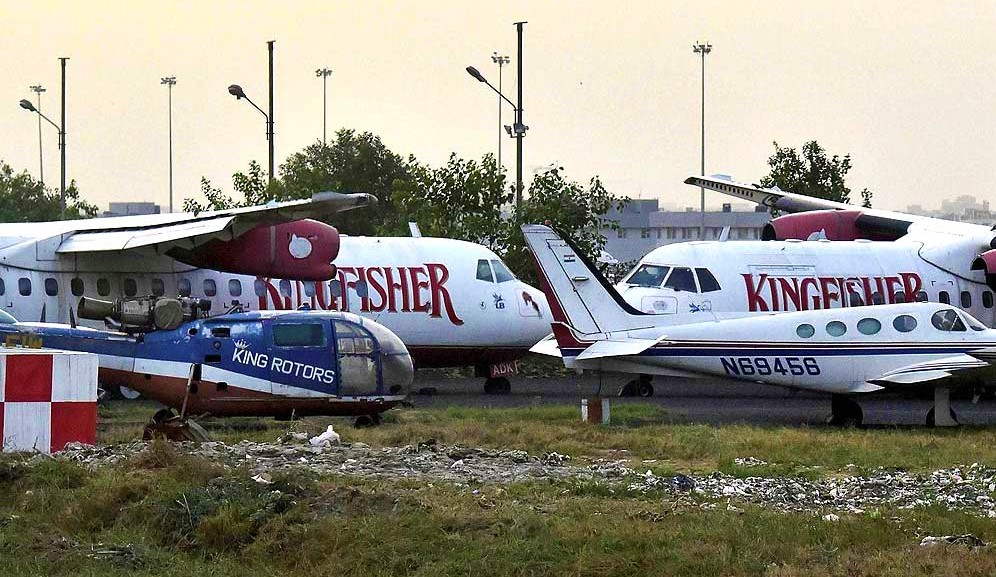


ATR says, "We recycle and reuse up to 85% of aircraft parts, that’s between 8 and 9 tones of the aircraft " , sounds good , but not always easier a process, against assumed !
Percieved as commercially viable, Commercial Aircraft decommissioning and recycling is a multidisciplinary process, with environmental, operational, safety, legal and economic aspects, and related challenges. Hence, to develop and implement best practices in this area, a proper co-ordination between involved stakeholders is always sought.
We recycle and reuse up to 85% of aircraft parts, that’s between 8 and 9 tones of the aircraft, and that’s why we’re the most eco-responsible regional aircraft pic.twitter.com/TRzeRx9p14
— ATR (@ATRaircraft) April 20, 2021
Efforts are tremendous, the aircraft disassembly, dismantling and recycling business is emerging and rapidly gaining importance as well . Global association, the Aircraft Fleet Recycling Association (AFRA) has taken industry bodies into confidence by concluding MoUs (memoranda of understanding) with both ICAO and IATA to strengthen cooperation across the aviation sector.
Early retirements that impact business interest of aircrafts are uncommon and the average age of aircraft at retirement is about 26.5 years globally unlike 1980s' 15 years. But, early retirement is an option for defunct airlines or carriers undergoing economic crisis.
In those conditions, disassembling it and selling the individual parts is more profitable than continuing to operate it , as the aircraft is still in satisfactory technical condition.
The average retirement age of Freighters is 32 years, as they are phased out later to passenger versions of same model. Many of today’s cargo aircrafts are converted versions of former passenger aircrafts. Due to Low utilization, through freighter conversion, the aircraft in-service time can be extended by typically 10 to 20 years.
• First phase : Salvage process - that includes the processes up to the removal of parts for re-use in other aircraft, is part of the aviation domain and subject to the related regulations. During this phase, the retired aircraft is still certified / airworthy.
• Second phase : This comprises final dismantling and recycling when the retired aircraft has lost its certification/ airwothiness and aviation regulations are no longer applicable.
After the owner’s decision to disassemble and dismantle an aircraft, it will enter the disassembly process, the purpose of which is to remove the valuable components from the aircraft, Life limited and Serialized components become the priority.
The removed components, depending on their technical condition, will either return to the aviation market directly or need to be inspected and repaired or overhauled by an approved repair shop before returning to service. These activities are performed by competent and authorized/certified agencies / shops in the aviation sector.
This is important, from an environmental point of view, the aircraft end of-life process brings both risks and opportunities. On one hand, aircraft contain a variety of hazardous materials that must be handled carefully during disassembly and dismantling. On the other hand, the vast majority of aircraft parts can be re-used or recycled without taking special precautions needed for releasing the aircraft to servcie.
End-of-life aircraft that have been abandoned on isolated areas of an airfield pose a different challenge, specifically when manufacturer’s documentation (manuals) is no longer available. This presents a particular risk of leakage of hazardous material and the contamination of surrounding environment.
Because these aircraft are no longer able to fly to dedicated aircraft dismantling facilities, mobile dismantling equipment may need to be used, and particular care is necessary to identify and prevent any contamination risk.
As an average, around 85% to 90% of the weight content of retired aircraft is re-used or recycled, reflecting the fact that both re-usable parts and recycled materials represent significant residual value.
It is estimated that between 40% and 50% of the weight of all dismantled aircraft is returned to the parts distribution pipeline.
Most of the remaining unserviceable material is recycled and returned to the supply chain as raw materials, In some cases, aircraft parts, or even entire aircraft have been repurposed for unconventional uses, ranging from furniture and art work, to hotels inside of an aircraft fuselage.
Usually, less than 10% of material is treated as waste.
Some of the unrecyclable materials consist of cabin interior components that include insulation blankets, carpets, seat cushions, sidewalls, and ceiling panels . These all contain embedded flame retardants, and safety regulations preclude them from recycling.
Technology is updating ! In the past, there was no method to recycle the composite materials, but, now recycling technologies have been developed.
In 2018, Boeing, VAS, and ELG conducted a joint project to dismantle a Boeing B787, and that was the first time a composite aircraft fuselage getting recycled.
ELG’s current process of recovering cured composites for reuse from manufactured components can be utilized for retired aircraft parts as well, which will be useful when more aircraft with large composite pieces begin to retire.
Given the long product life-cycles of commercial aircraft , large scale composite structures will not come out of service for at least another decade.
The aviation industry is optimistic that today’s high recycle rates will be maintained as technology to process the materials continues to mature.

International Standards and Regulations.
Recycling and reuse of aircraft parts and componets is welcome, but should always be done under the regulatory framework .
The various regulations in this regard are ,
► The SARPs in Annex 6 (Operation of Aircraft), and Annex 8 (Airworthiness of Aircraft) to the Chicago Convention on International Civil Aviation.
► Airworthiness Manual (ICAO Document 9760), requirements and guidance.
► ICAO Annex 14 (Aerodrome Design and Operations) for the aircraft unable to fly and has to be removed from an airfield.
Source : ICAO , Pictures and Videos Embeded.
